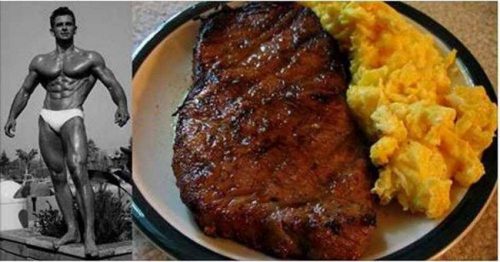Whether you are a bodybuilder, a fitness athlete or an average Joe trying to lose weight, you probably already heard about the ketogenic diet plan. You may have heard that it’s very effective and you are going to cut the fat real fast while on it. There are two questions you need to ask before applying this diet plan – can you go through it and will it be effective for you. Let’s go through the basics of the ketogenic diet and help you decide if this plan is right for you.
The Basic Idea Behind the Ketogenic Diet Plan
Sipmly put, the main idea behind this plan is to cut your carbs so low, that your body will be forced to use another form of energy -or in this case – fat. As it does this the body burns its stored fat along with the fat you are providing from dietary sources. This way you are burning fat at a faster pace if a lower calorie intake is provided.
This state of the body (where the body uses fat instead of carbohydrates for energy) is called ketosis, which is how this diet plan got its name.
In order to reach the state of ketosis you have to deprive the body of carbohydrates. Actually the percent of calories coming from carbs has to drop to about 5% or lower. The percent of protein should be around 40 while the majority of calories should come from fat – around 55 % or more, depending on the amount of carbs you eat.
Who can use the Ketogenic Diet Plan
First of all, this diet is for those who can function on less carbs more easily than others, and also those who struggle with hunger during a normal low calorie diet. Because of the high content of fat, hunger is almost non-existent while on the ketogenic diet.
This being said, this diet is not for individuals or athletes that do carbohydrate-dependant workouts, such as long and heavy periods of cardio (think bicyclists or swimmers) or intense and long weight workouts. The workout you use around this type of diet should definitely be a short one.
If you are still trying to have an intense workout you should take those 5% (or even some more) of carbs around the workout. Adding some carbs before and right after the workout will ensure that you have the energy to do an intense workout. Then after the workout is over you can go back to your very low carb approach and go back into ketogenic state.
Pros and Cons of the Ketogenic Diet Plan
Ok, let’s start with the negative sides first:
Cons:
– Feeling disoriented and having issues to concentrate
– Very low levels of energy at times
– It can cause health issues over longer periods of time and if healthy food choices are not made (We are talking about healthy vs unhealthy fats here)
Pros:
– Hunger is not going to be an issue while on this diet
– Because of the low hunger feeling, you can follow a lower calorie intake
– It controls food cravings
– It helps you burn fat pretty fast
Overall, this is a good diet if you don’t use it for very long periods. One thing you need to keep in mind is that if you do want to follow an intense workout, you need to add some carbs for energy around it and you may need to add an additional rest day or two because of the low energy levels.
The second important thing to remember is to eat your carbs in form of vegetables and fruits as they tend to be higher in nutrients, needed to help you maintain your good health. Also, be sure to eat healthy fats and lean protein sources. Using processed foods and unhealthy fats will make this plan a very unhealthy diet plan.
A very effective diet, if you can’t handle low carbs, is the intermittent fasting or the carb cycling diet where you eat large amounts of carbs periodically.



Post your comment